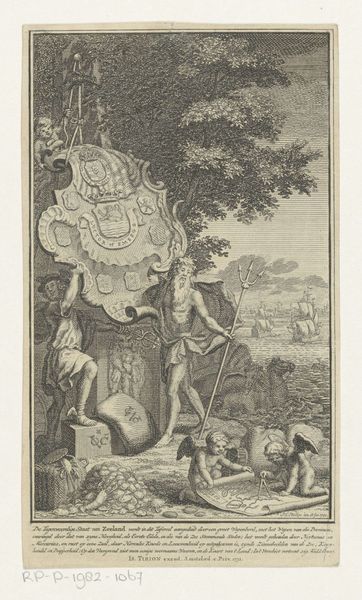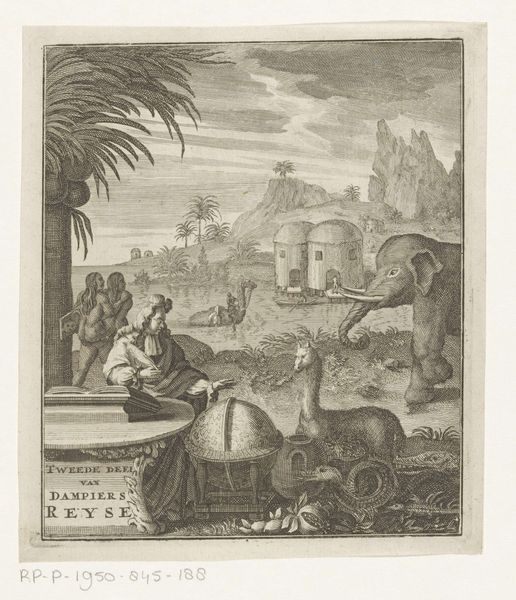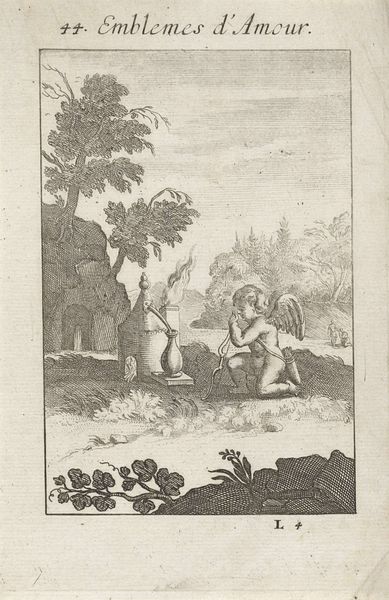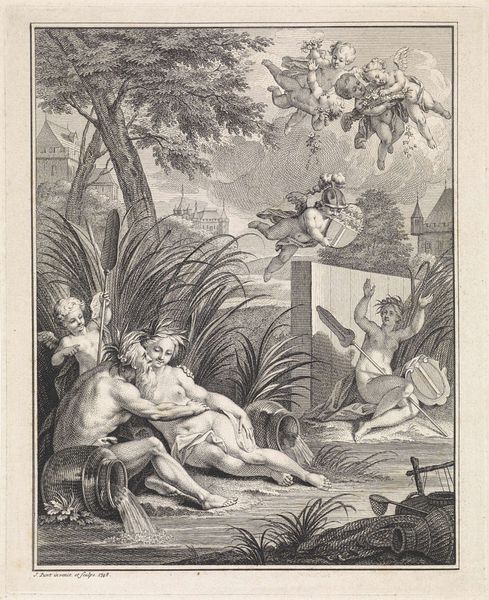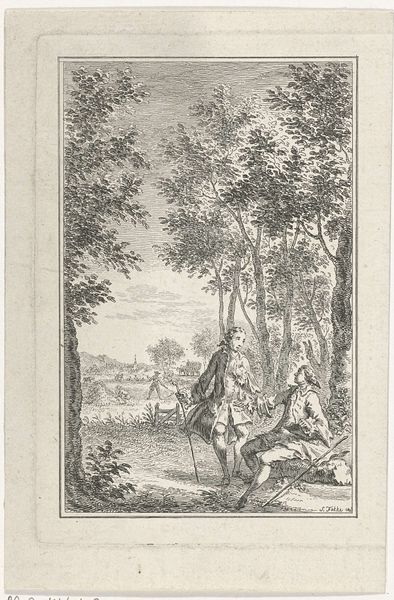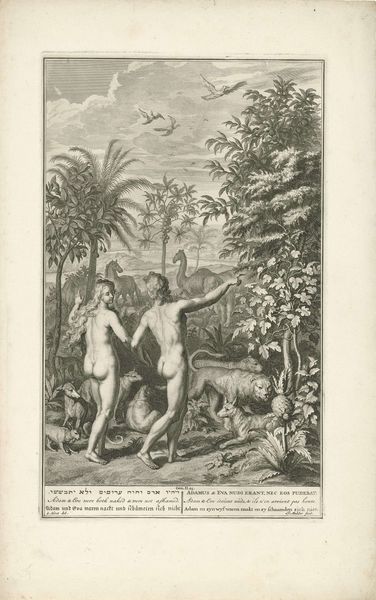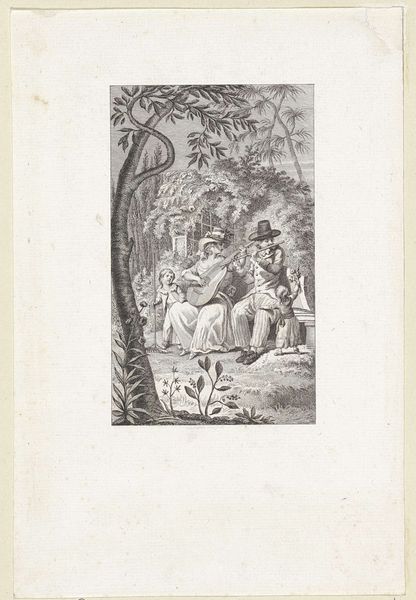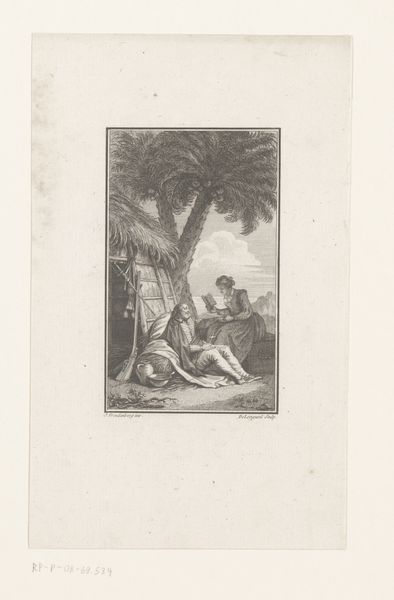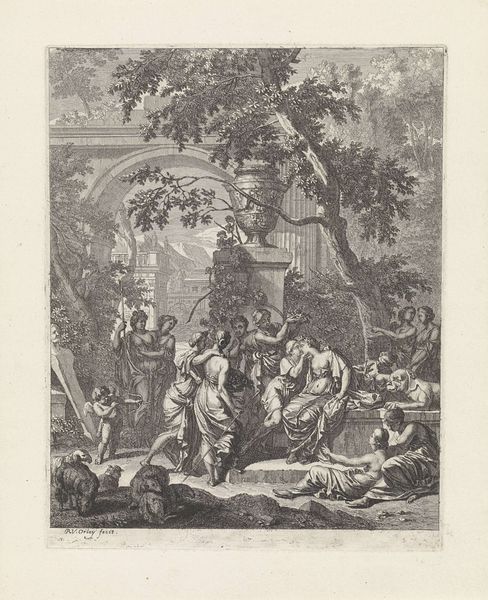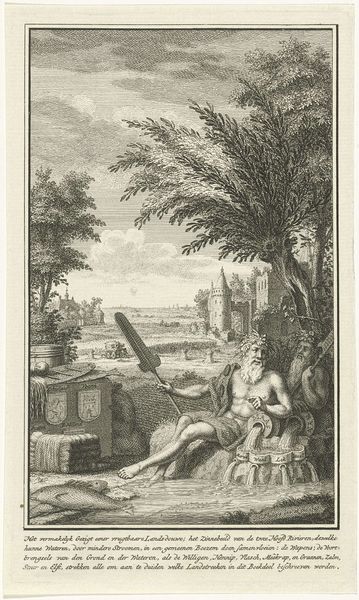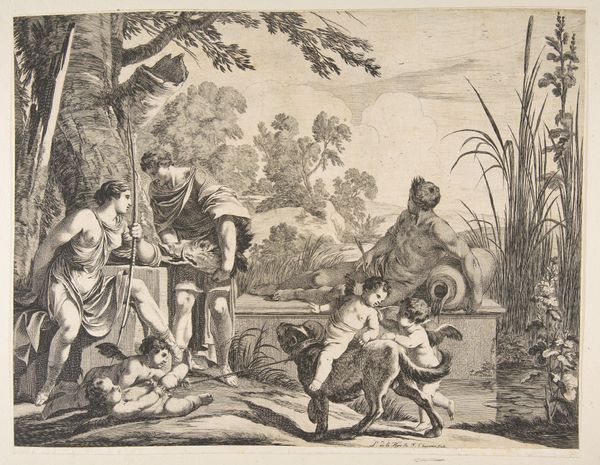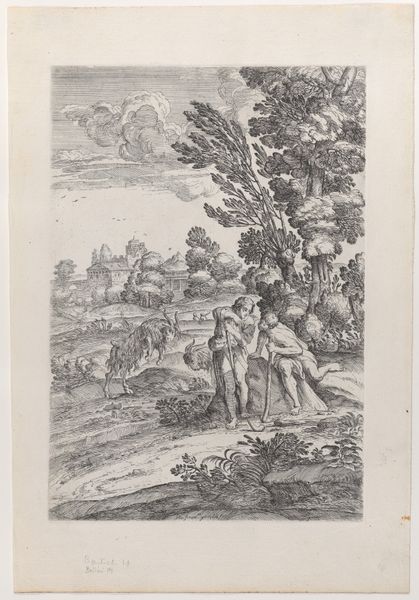
Dimensions: height 181 mm, width 108 mm
Copyright: Rijks Museum: Open Domain
This allegory of the Americas was engraved by Jan Caspar Philips in 1742 in Amsterdam. It presents the American continent through a European lens, reflecting the complex colonial dynamics of the time. The image uses symbolic figures and objects to represent America. A native American figure, an allegorical female figure representing the continent, and putti are arranged with signifiers of trade and natural resources. Consider the role of the Dutch East and West India Companies at the time. How would these have impacted the artist's view of the Americas? The cocoa tree, armadillo, and arrangements of fruit highlight the perceived exoticism and abundance of the "New World," but also justify the exploitation of its resources. It also reflects the institutional interest in depicting newly colonised lands as ripe for the taking. Understanding this engraving requires us to consider the social and economic context of 18th-century Dutch colonialism. Resources in archives, libraries, and museums can help us better understand this historical moment, shedding light on how the arts participate in the colonial project.
Comments
No comments
Be the first to comment and join the conversation on the ultimate creative platform.
